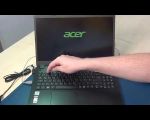- 1. What is the Dell Boot Key?
- 2. Why You Might Need the Dell Boot Key
- 3. How to Access the Dell Boot Menu Using the Boot Key
- 4. Troubleshooting Dell Boot Key Issues
- 5. Dell Boot Key Alternatives
1. What is the Dell Boot Key?
The Dell Boot Key is a key combination or single key used to access the boot menu or BIOS settings on Dell computers. This key allows users to change the boot order, choose a bootable device (such as a USB drive, DVD, or external hard drive), and troubleshoot system issues. It is an essential tool for users who need to install an operating system, run diagnostics, or boot into a recovery environment.
By pressing the boot key during the initial startup of your Dell computer, you can access a menu where you can select which device you would like the system to boot from. This is especially useful when you're installing a new OS or fixing boot-related problems.
2. Why You Might Need the Dell Boot Key
There are several situations where knowing the Dell Boot Key can be incredibly helpful:
- Installing an Operating System: If you are installing Windows or any other operating system from a bootable USB drive or DVD, you'll need to use the boot key to select the device from which the system should boot.
- Booting from a Recovery Drive: In case of system failure, you may need to boot from a recovery drive to restore or repair the operating system.
- Running Diagnostics: The boot key can also be used to access Dell's built-in diagnostic tools to check your computer’s hardware status and troubleshoot issues.
- Changing Boot Order: If you need to boot from a different device (e.g., external drive), the boot key allows you to change the boot sequence without needing to access BIOS settings manually.
Knowing the Dell Boot Key and how to use it can save time and prevent frustration, particularly when troubleshooting or performing system maintenance tasks.
4. Troubleshooting Dell Boot Key Issues
If you are having trouble accessing the Dell Boot Menu with the boot key, here are a few potential causes and solutions:
- Incorrect Timing: Make sure you press the boot key (F12) immediately after turning on the computer. If you wait too long, the system might bypass the boot menu and proceed to the operating system. Try restarting and pressing the key repeatedly.
- Keyboard Issues: Ensure that your keyboard is functioning properly. If using a wireless keyboard, try switching to a wired one to avoid connection issues during boot.
- Secure Boot Enabled: Some Dell systems have "Secure Boot" enabled by default, which may prevent you from booting from external devices. Disable Secure Boot in the BIOS if necessary.
- BIOS/UEFI Settings: If you're still unable to access the boot menu, it might be a BIOS/UEFI issue. You can try resetting the BIOS to default settings or updating the BIOS version.
These troubleshooting tips should help resolve common issues with the Dell Boot Key and allow you to successfully access the boot menu.
5. Dell Boot Key Alternatives
In case the traditional F12 key doesn't work for your system, there are other ways to access the boot menu or BIOS on Dell devices:
- F2 for BIOS Settings: If you need to access the BIOS (or UEFI), press F2 during startup to modify system settings like boot order.
- Esc Key: On some models, you may need to press Esc to access the boot menu or additional startup options.
- Advanced Startup (Windows): If you're using Windows 10 or later, you can access advanced startup options by going to Settings > Update & Security > Recovery, and then selecting Restart Now under the Advanced Startup section.
These alternatives can provide access to boot options and BIOS settings in case the standard boot key method doesn’t work.































